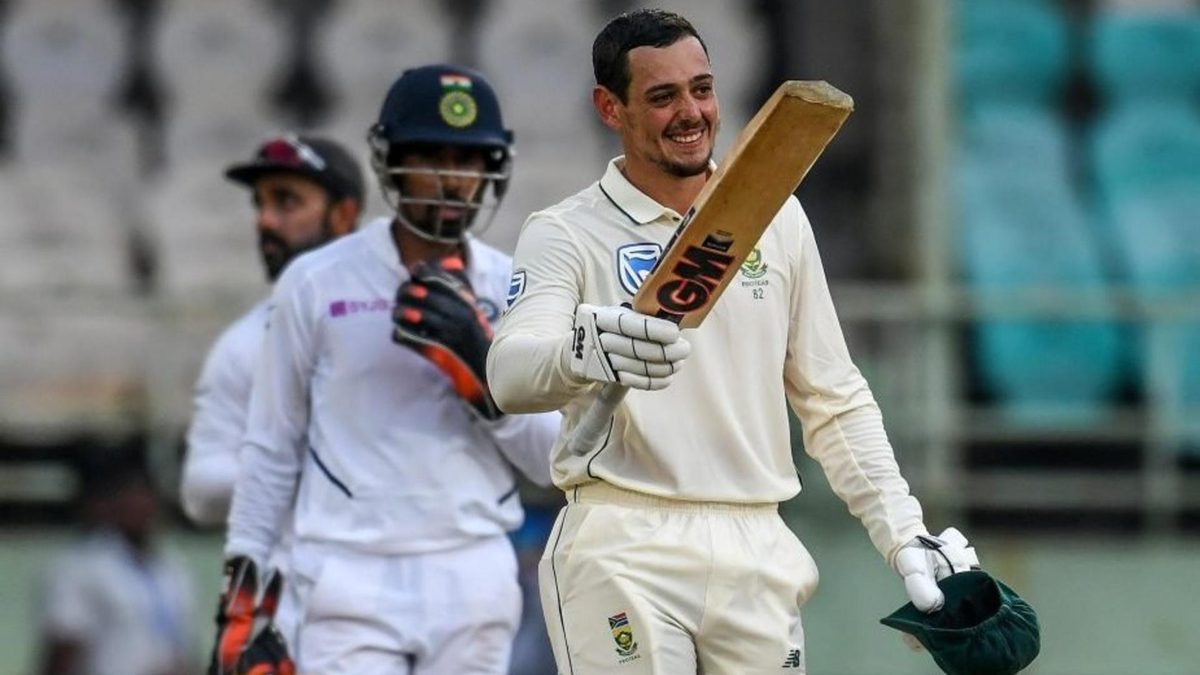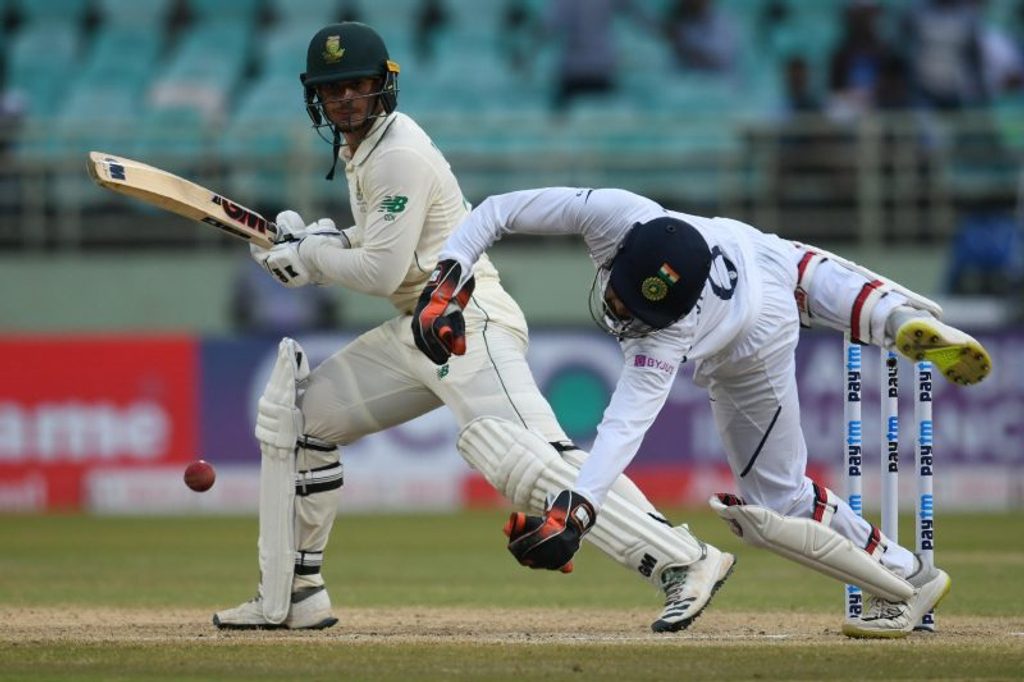
With his sublime 111 on Friday, Quinton de Kock moved within eight runs of tying Rory Burns as Test cricket’s third-highest run-scorer in 2019. Akshay Gopalakrishnan analyses de Kock’s fifth Test ton.
It has been a bounty year in whites for Quinton de Kock. The South Africa wicketkeeper-batsman has passed fifty in all but two of the eight innings he has played this year. Among the top ten scorers for the year, only Australia’s Steve Smith has done so with greater frequency, having also passed fifty six times, but in one fewer innings. Among batsmen with 400 or more runs in the year, de Kock’s average of 67.37 is also bettered only by that of Smith, who was Bradmanesque at the 2019 Ashes. It is also the best average across the six calendar years that de Kock’s Test career has spanned.
That these performances have arrived in the same year when he has been named T20I captain and been identified as the man to lead South Africa at next year’s World Cup in Australia leaves his career at an interesting juncture. In the 50-over World Cup earlier this year, de Kock had an underwhelming tournament by his standards, with nine outings returning a yield of 305 runs at an average of 38.12 and strike-rate of 86.89. And yet, this is the year in which he has had his best bilateral series returns ever, which he achieved when he pillaged 353 runs in five matches at home against Sri Lanka, shortly before the World Cup. His overall ODI batting average for the year is 48.37, while his strike-rate of 100.12 is second only to the corresponding number for 2016.
 Despite a disappointing World Cup campaign, de Kock’s ODI numbers this year are impressive
Despite a disappointing World Cup campaign, de Kock’s ODI numbers this year are impressive
Those are numbers that paint the picture of a player that is both fire and substance. Always full of promise, de Kock has come good on that to steadily morph into a game-changer, not just with his ability to score quick runs, but also with his ability to score the tough runs.
As was the case in Visakhapatnam, on the third day of the first Test against India. De Kock walked on to a weak foundation, a consequence of a top-order capitulation. At 178-5, India’s 502 seemed a distant target when de Kock took guard; by the time he was done, he had brought South Africa to within 135 runs of the mark.
It was, in every sense, a trademark de Kock innings. Not one to be fazed by the situation and hold back, de Kock freely expressed himself, making sure to capitalise on every opportunity he could to score.
 De Kock hit 92 runs from the 111 balls he faced outside off
De Kock hit 92 runs from the 111 balls he faced outside off
According to CricViz data, de Kock attacked 47 balls and scored 72 runs off them. That’s nearly 29% of all the balls he faced. Roughly translated, it means he attacked one in 3.4 balls. By contrast, Dean Elgar, his partner, with whom he added 164 runs for the sixth wicket, attacked only 56 of the 287 balls he faced, or, in other words, one in 5.1 balls. Even Rohit Sharma and Mayank Agarwal, the two first-innings heroes, only attacked one in 4 and 3.9 balls respectively. In all, de Kock struck 76 of his 111 runs – 68.4% of his tally – in fours and sixes.
There was still an element of caution to de Kock’s method, however, as he didn’t look to advance down the ground. He made up for it with supreme control. According to CricViz, 17 of the 18 boundary shots he played were either middled or well-timed or both. He also edged, gloved, spliced, or played and missed outside off on only 10 occasions.
While he was quick to put away half-volleys, collecting four fours off the 15 such balls he faced, on a day that lacked massive turn or bounce for the large part, de Kock was punishing on anything that sat up on a length, collecting 11 fours and two sixes off balls that pitched in this region.
A master of the off-side game, de Kock made use of the slightest of errors in line; of the 111 balls he faced outside off, de Kock smashed 92 runs. Fourteen of his fours and both his sixes came off balls in this corridor. He especially favoured the backward point, point and mid-off regions, where he collected 68 of his runs, off just 55 balls.
By the time he was done, de Kock had made sure that South Africa had exceeded expectations. After losing three early wickets late on the second day, it had seemed as though the ghosts of their 2015 tour would resurface. But in the company of Elgar, de Kock made sure that South Africa had bettered all their efforts with the bat on that tour in the very first game this time around. In the time he and Elgar spent together, South Africa progressed at nearly four an over. It protected them against stagnating after the previous evening’s losses and helped them avoid going into a shell in their first outing of the series.
It’s another example of the value that players like de Kock bring with their bold and fearless approach, and why attacking batsmen are of such value in modern-day Test cricket. These are batsmen that have an element of audacity in their game, and when it works in their favour, it can make for delightful viewing and improbable feats àla Ben Stokes at Headingley.
In some ways, de Kock and Stokes are batsmen of a similar breed. They are middle-order juggernauts, whose presence at the crease can have an uplifting effect. While they’re there, the opposition can never be insured against being shocked. Since the start of 2018, among batsmen to have played between Nos. 4 and 7 in Tests, de Kock’s average of 37.72 is fifth among the top ten run-scorers, while nobody strikes them at a faster rate than his 76.35. Those are game-changing numbers.
Besides, de Kock’s performances have traditionally had a telling impact on South Africa’s success. They have never lost a Test in the four previous instances in which he has scored a century, while only five of his 17 half-centuries have come in a losing cause. What kind of an effect this Visakhapatnam century has on the result for South Africa remains to be seen. But irrespective of the outcome, it could potentially set the tone for the rest of the series and instil new belief – one that tells them that batting in India, especially after losing the toss, needn’t be such a sobering prospect after all.








